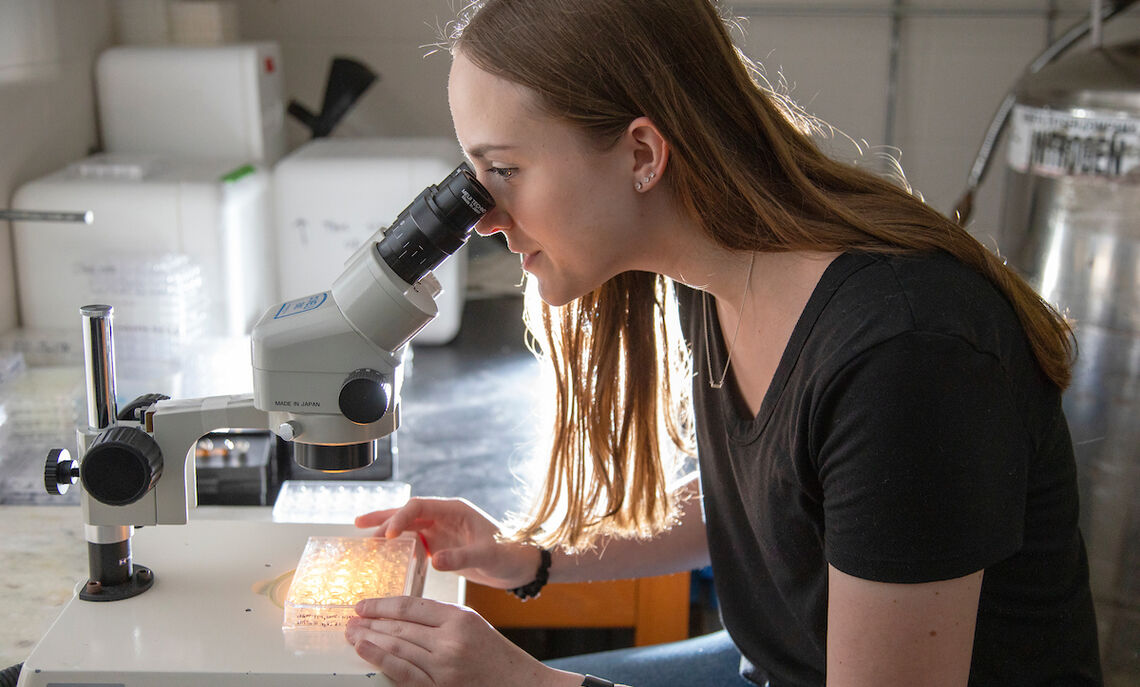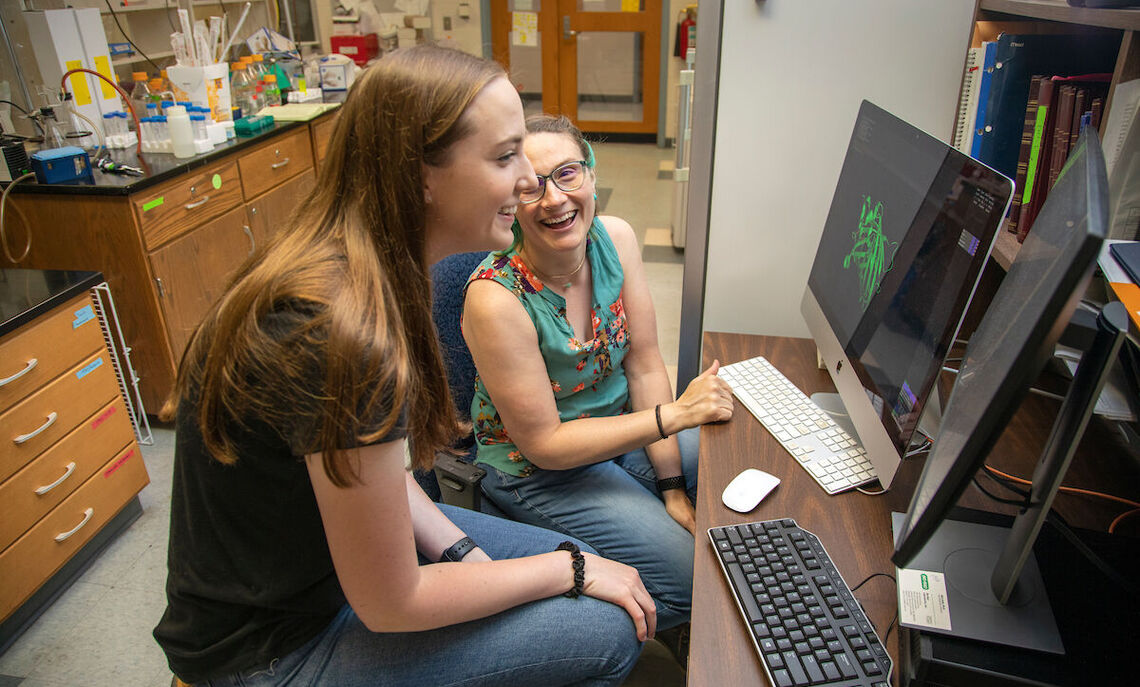F&M Stories
Student Researcher Helps Develop Tool for Biochemists
Proteins are composed of amino acids and are macromolecular, one-one millionth the size of a golf ball. Small but mighty, they function inside the cell as the machinery running critical biological processes that are essential to all living things.
In her research with Franklin & Marshall Associate Professor of Chemistry Christine Phillips-Piro, rising senior Sarah Schick, a chemistry and biochemistry and molecular biology double major, is at work in the laboratory on a technique that would allow scientists to better understand how proteins function.
Specifically, Schick and Piro are developing a tool to understand the structure of and the distances between amino acids—distances that, on the Ångstrom scale, are one-10 millionth the diameter of a golf ball.
To measure such short distances they insert a specific non-natural amino acid, 4-cyano-L-phenylalanine (pCNF), into the protein.
"Our ultimate goal is to use pCNF as a vibrational reporter," Schick said. "In the lab previously, they've been able to place pCNF at one spot on a protein and then from there analyze the solvation environment that surrounds that specific amino acid."
However, she said, "When we insert pCNF in two spots, it can vibrationally couple and from there we can calibrate it to measure distances in proteins. Essentially, it becomes this [measuring] ruler in the protein."
They then use two-dimensional infrared spectroscopy to study the reporters' vibrations.
"To measure distances that small in a protein is really difficult. Other techniques – for example, they insert very large dye molecules into the protein — disturbing the overall protein structure," Schick said. "We are placing in something that is similar in size to the original amino acid and is therefore not disturbing the structure as much. That is why this is so important for us to actually develop."
Of the many options available to study protein structure and distance is X-ray crystallography, "one of the main techniques in our lab [and] a great way to do that," Piro said. "You see the whole structure and you can measure these distances in programs, but that's really time intensive, not everything crystalizes, and you have to collect data at a remote lab."
The professor explained, "We're really working to develop a tool in a tool kit for biochemists or structural biologists that measure these distances."
Crystallography plays a role, too. Think of a ruler, Piro said, and holds one up. "Imagine there are lines, but no numbers. That's what the two-dimensional spectroscopy of the vibrational reporters are going to give us, a mark somewhere on here; what the crystallography is going to allow us to do is calibrate the ruler and add numbers corresponding to those lines."
The "ruler" would enable scientists to measure distances in a protein in a solution, which eliminates the need to crystalize the macromolecule while also providing a view of changes in its structure, she said. To work effectively, proteins often undergo conformational changes.
"If a protein is going to metabolize a drug so that it can become active in your body, it might need to open up so the drug can come in to the protein, close so the drug can be processed by the protein, and then it has to open up for the drug to release," Piro said. "Looking at those changes in distances or looking at that conformational change is very difficult because we're talking about tens of Ångstroms or even less. So our technique is giving us tools to look in that range and those very short distances."
Schick said the research experience, and the independence she was given in the lab, will help her in her post-graduate plans. She intends to work in the pharmaceutical industry in research and development, where she can apply the technical skills she is learning.
"It's been incredible and I've been learning at such a fast pace," she said.
Related Articles
March 26, 2024
Sarah Tasker Awarded NSF CAREER Grant for Chemistry
A laboratory discovery has resulted in a prestigious National Science Foundation CAREER grant for Sarah Tasker, assistant professor of chemistry at F&M.
October 20, 2023
Google Software Engineer Shares True Blue Wisdom
Class of 2019 grad Horace Facey's path led him from Jamaica, to F&M, to Google. See how he helps other STEM students succeed. "Mentoring has been an excellent way for me to give back," Facey says.
June 16, 2023
F&M Team's Chemistry Discovery Goes Commercial
In a rare event for any liberal arts college, a Franklin & Marshall chemistry professor and her two students made a scientific discovery that is now a commercial product.


